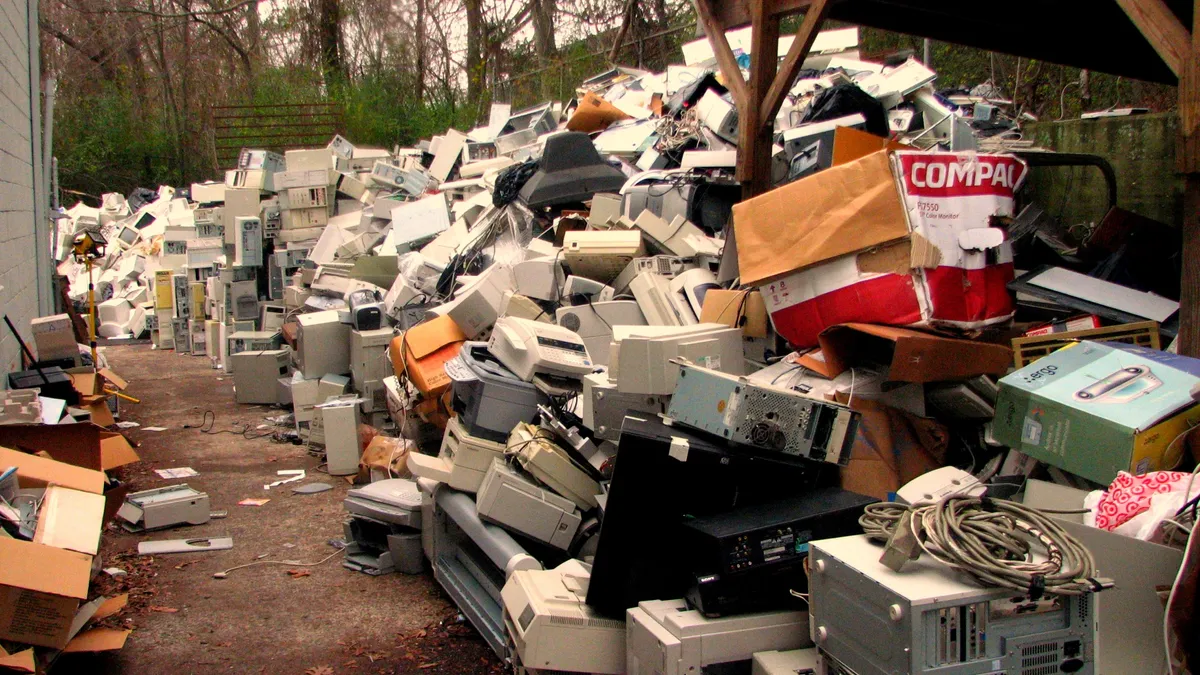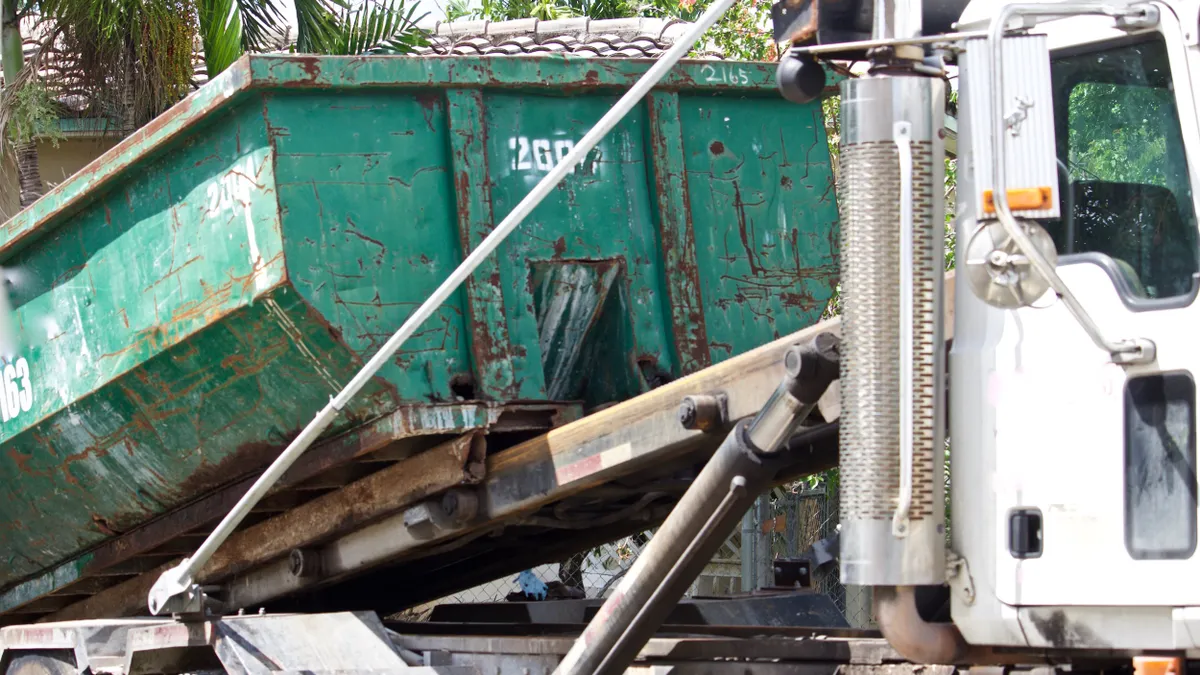Dive Brief:
- Globally, consumers generated 44.7 million metric tons of e-waste in 2016, according to a new report from the International Solid Waste Association, the United Nations University and the International Telecommunication Union. This number is 3.3 million metric tons higher than the reported tonnage of e-waste in 2014 — an 8% increase.
- By 2021, there will be an estimated 52.2 million metric tons of e-waste generated, a 17% increase from 2016.
- The report estimated raw material from e-waste had a total value of €55 billion in 2016. That's based on the value of raw material in the devices, including copper, iron, gold, palladium, silver and plastics. Only 20% of e-waste is estimated to have been properly recycled in 2016.
Dive Insight:
As the stream of e-waste grows, it will likely continue to generate logistical concerns for the waste industry. Disposed electronics often come with disposed batteries, which can cause fires, a threat to workers. This report from ISWA tracks with a recent study from the United Nations Environment Program, which estimates a total of 50 million metric tons of e-waste will be generated in 2018 alone.
The problem of e-waste is already massive — but so is a growing economic opportunity. This latest report estimates that 76% of e-waste ended up in landfills, burned, informally recycled or stuck in households in 2016; this despite the billions of dollars in value to be potentially mined and harvested from old electronic devices.
Returning e-waste back into a controlled stream where it can be harvested for raw material or refurbished and resold could generate revenue and create jobs for e-waste recyclers. Some advocacy groups have called on electronics manufacturers to make devices easier to repair or recycle — with batteries being an especially concerning feature — to cut down on raw material use and improve recycling.
Some see the "right to repair," which would make it so companies have to sell spare parts and provide repair manuals to consumers, as inevitable. In the meantime, consumers should be reminded to keep dangerous lithium batteries out of their usual trash cans — and recyclers should not ignore the economic opportunity they could find by processing and refurbishing old electronic devices.













